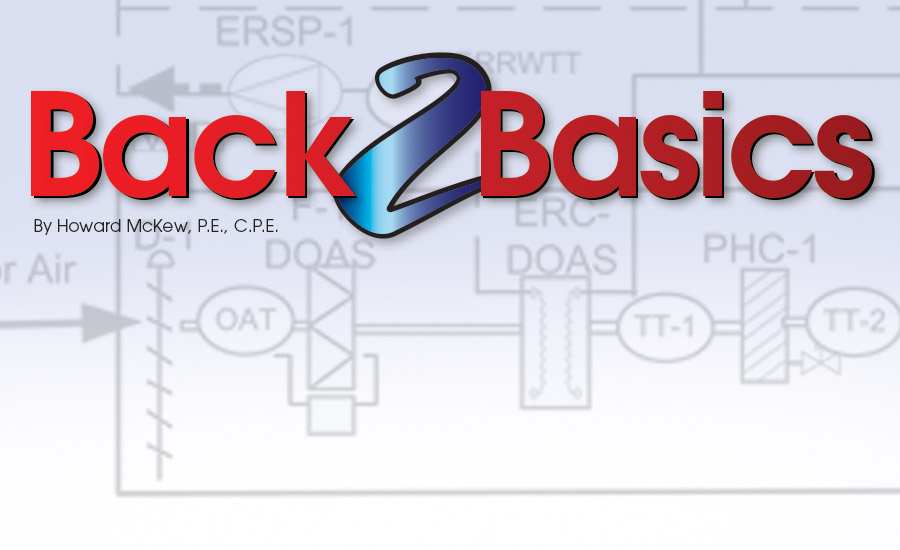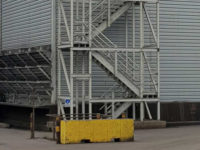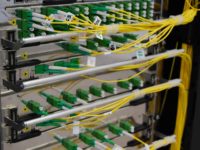This month’s B2B will focus on a hospital’s offsite data center as described in the 2015 ASHRAE Handbook — HVAC Applications chapter 19. The scope of work is to replace an existing cooling tower that operates 24-7 year-round. The design engineer is directed to 2016 ASHRAE Handbook — HVAC Systems and Equipment and more specifically chapters 1 (HVAC System Analysis and Selection), chapter 14 (Condenser Water Systems), and chapter 40 (Cooling Towers). It is also recommended that the design team and the owner’s team review the Cooling Technology Institute (CTI) cooling tower manual and the CTI certification.
The benefits of the data center replacing the existing closed-loop cooling tower with a new one are:
• Continuation of maintaining a clean process/condenser water fluid via the closed-loop piping system
• Sustain the performance of high efficiency with the cleaner, closed-loop system
• Reduced energy consumption by operating in “Free Cooling (waterside economizer) Mode” of operation during the heating season
• Reduced energy consumption by operating fan at variable speed
• Lower volume of city water makeup to the tower
Project delivery method shall be design-bid-build (DBB). The data center facility manager will provide her own operating and maintenance staff assistance to the general contractor’s subcontractors and cooling tower equipment manufacturer’s technician at project startup.
For this month’s equipment selection, a modular blow-thru cooling tower will serve the existing closed-loop condenser water system. The theater shall be heated by three modular condensing boilers. This unit shall be 150 tons heat rejection, with a wet bulb temperature of 78˚F. Condenser water during the air-conditioning season shall be 85˚F CWS and 95˚F CWR at peak cooling/heat rejection. During the heating season, the replacement tower shall operate at 48˚F CWS and 58˚F CWR in sync with an existing plate-and-frame heat exchanger. This unit shall be connected to an existing city water make-up line at the unit along with existing shut-off valves. Fan shall be variable speed blower system, 24 VAC control circuit, and control panel.
Electrical shall be 480/3/60, with pre-wired electrical power to automatic controls and fan motor furnished with the cooling tower. A remote outdoor disconnect shall be installed at the tower located on the data center roof. The HVAC subcontractor’s ATC subcontractor and electrical subcontractor shall work together to rewire existing power wiring along with interface of new cooling tower controls with the existing BAS including system’s associated condenser water pumps.
Design team shall include the HVAC design engineer as the prime consultant with structural, plumbing, electrical, and estimating consultants. The owner shall retain a commissioning and water-balancing consultant.
The design team, along with the owner’s input, shall produce conceptual drawings, basis of design (BofD), design development (DD) drawings and specifications, and contract documents (CD) in sync with the commissioning consultant’s commissioning plan. The water balancing consultant’s TAB plan shall be coordinated with the HVAC design engineer to work in sync to produce an as-built hydraulic model of the entire condenser water system to assure continuous system performance and to assess condenser/process water system expansion. The data center facility manager shall have her O&M personnel review the documents throughout the design phase and receive introductory training for the new equipment. This staff shall observe equipment startup, DBB contractor and subcontractors’ punchlist, cooling tower manufacturer’s cooling tower on-site performance test, and the commissioning system demonstration.
The DBB shall include the following during the shop drawing submittal phase:
• Equipment submittals - Startup sheet - Troubleshooting sheets - cooling tower performance testing process - O&M manuals, parts, and lubricants - ATC and energy management submittal including one complete ATC submittal integrating manufacturer’s cooling tower furnished ATC into an integrated overall ATC submittal.
A third-party commissioning and testing, adjusting, and balancing (CxTAB) firm shall complete the following:
• TAB system flow diagram of entire (new and existing) condenser water system with GPMs and pump heads indicated at each piece of new and existing equipment.
• TAB system flow diagram of entire supply and return water system drawing upon data from the hydraulic model with GPMs and pressure drops at each piece of process cooling equipment and at major branch runouts.
• Commissioning functional performance test of the cooling tower replacement unit and existing condenser water system.
Refer to The Facility Files for additional information pertaining to completing the B2B test. ES





